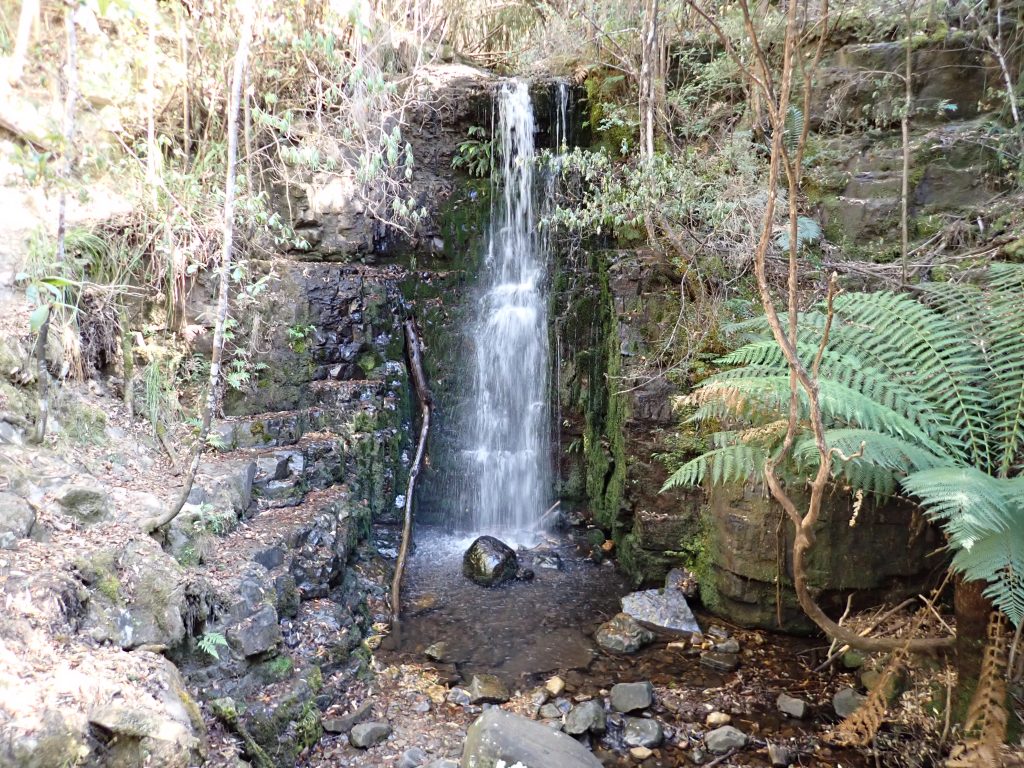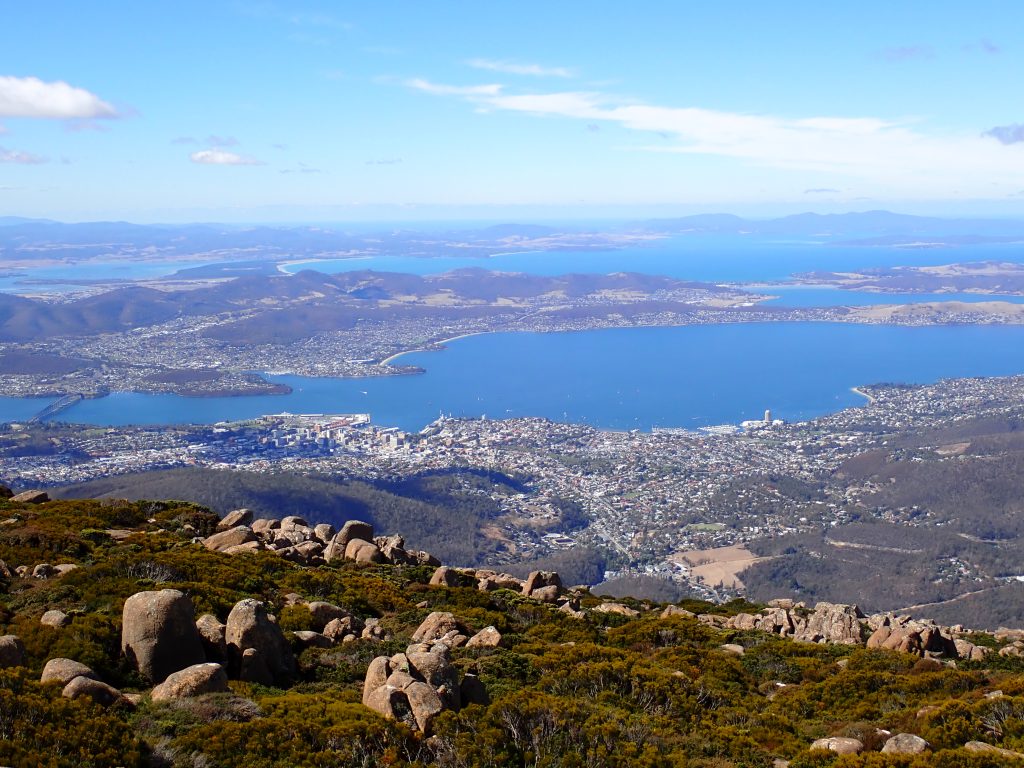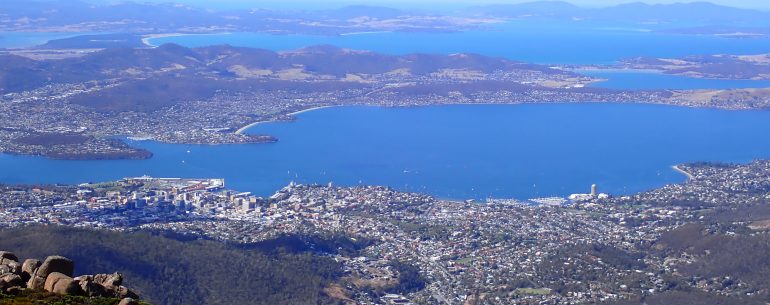We had been recommended by friends to visit the Wooden Boat Company in Franklin on the Huon River and figured what’s not to like – wood and boats – a perfect combination. The drive was about 40 minutes and the last stretch followed the river. The Wooden Boat Company is in a shed on the riverfront by a small marina. Their aim is simple – to maintain the traditional skills required to build wooden boats. They do this by running boat building courses (often small kayaks) – both short and long – and also by training the next generation of shipwrights. Some of their work is new builds and some is restorations and there was a combination of both in the workshop when we visited.
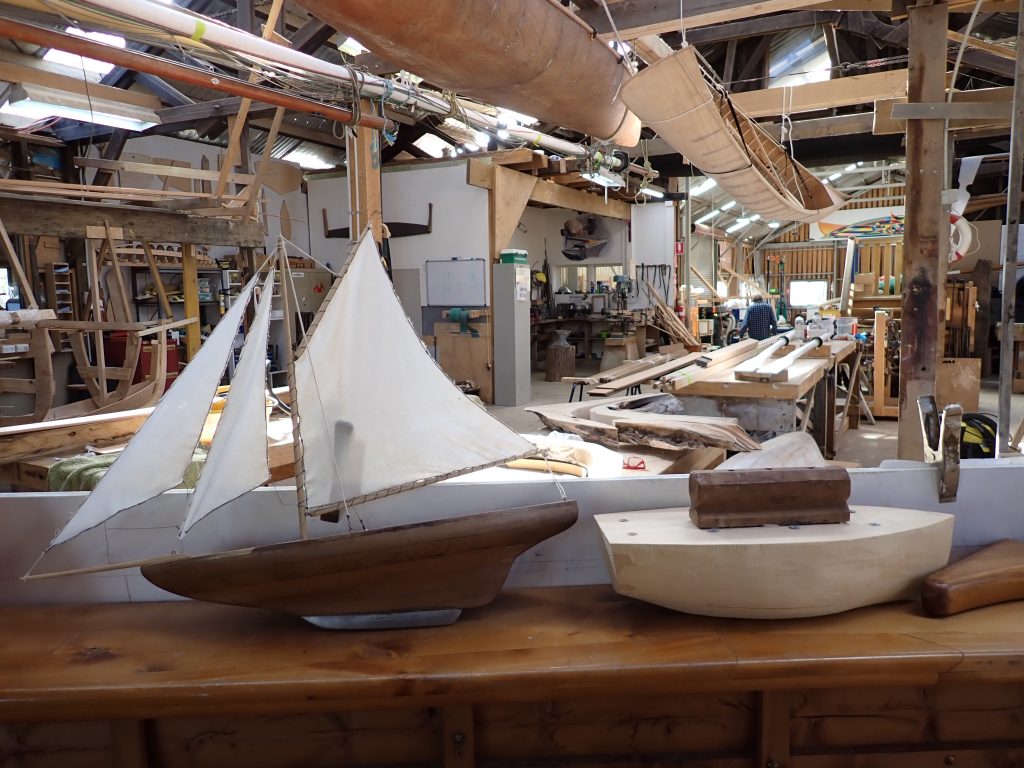
We were given a personalised tour (we were the only ones there at the time) by a very knowledgeable tour guide. He took us through the different woods they use and the issues around sourcing their woods. One of the main traditional woods used for boat building was Huon Pine (Lagarostrobos franklinii), also known as Macquarie pine. This is the wood that was used for all the boat building on Sarah Island on the Gordon River and indeed probably the main reason why Sarah Island became a boatbuilding centre for convicts. Huon pine is incredibly slow-growing and very long lived. Individual trees can be 2-3,000 years old and it is very rich in oils making it rot-resistant – ideal for boat building. Because of the high oil content, it is also very resistant to toredo worms. These were originally named by Carl Linnaeus and they love wood. They have a pair of small shells at one end of their body and use that to bore their way into wood and they are really really good at boring! They can devastate any wooden structures – boats, piers, jetties, pretty much anything. However, they start boring into Huon pine and then hit the oils in the main wood and decide to head off and try something else. This makes Huon a great boat building wood – naturally resistant.

But Huon pine is now protected. The early boat builders devastated the forests and they are now completely protected – no living tree can be cut down. Some 15% of its habitat has been lost through hydroelectric schemes and fires in the last 100 years and logging devastated the largest trees, but there is regrowth now that there is full protection. The only way that the Wooden Boat Company can now get Huon is through recycling or any older woods sourced sustainably. That makes it very expensive – around $10,000 per cubic metre. This means that they tend now to just use Huon for detailing or particular components like knees, stringers and gunwhales where long life and rot resistance is important.
For canoes, they also use a technique where they clad them with stretched ballistic nylon. Once fully stretched they coat it in urethane to harden it, making a very strong but light kayak.
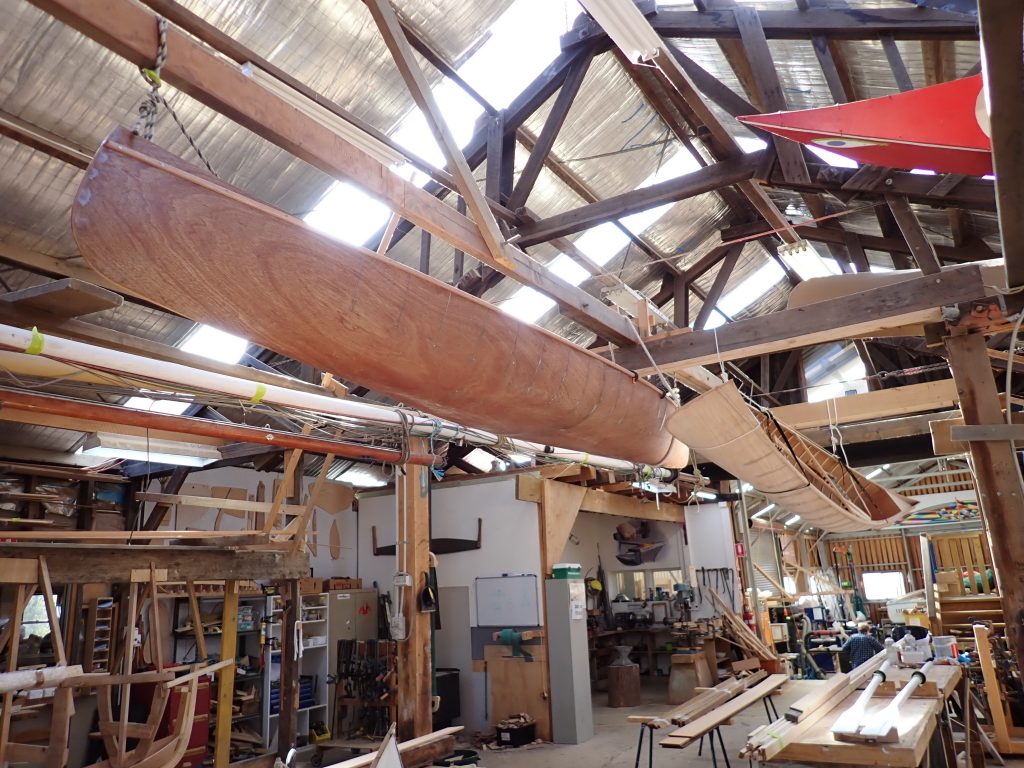
After the boat centre, we drove back to town via Mount Wellington. This is quite a long via as the summit is 1,271 metres above sea level and we started at sea level. We broke the trip by doing a 4km walk to O’Grady’s Falls though a beautiful stretch of fern forest, but after that wove our way to the summit and there was a lot of weaving. We were lucky though with the weather – the view from the top was stunning ……
